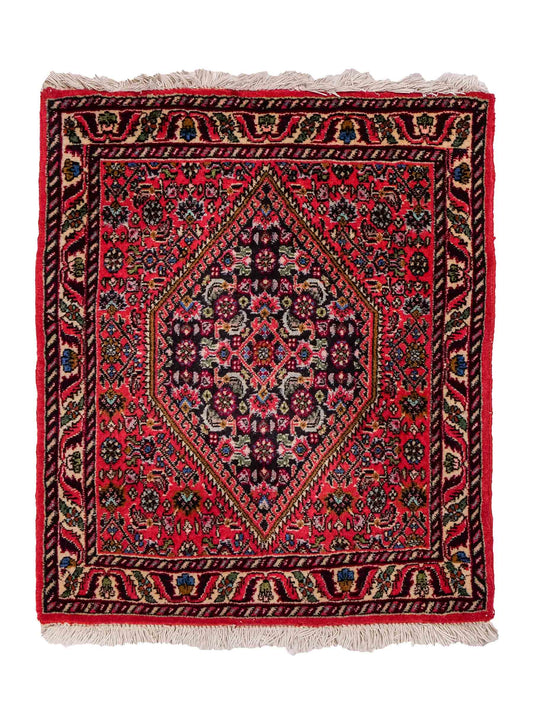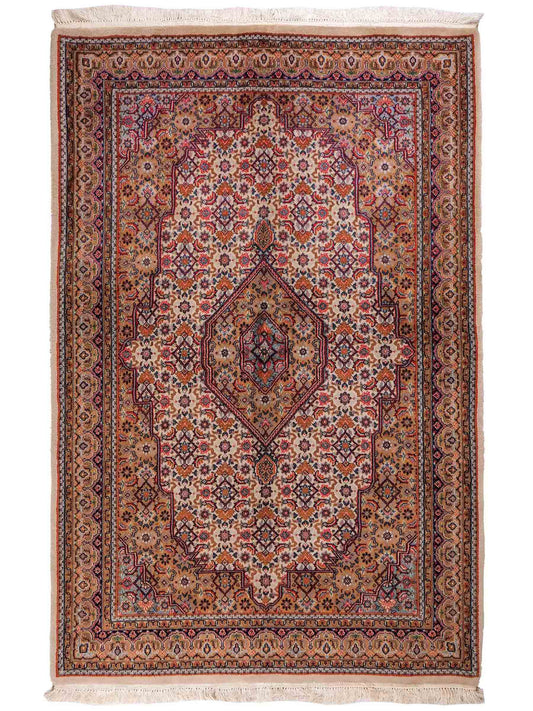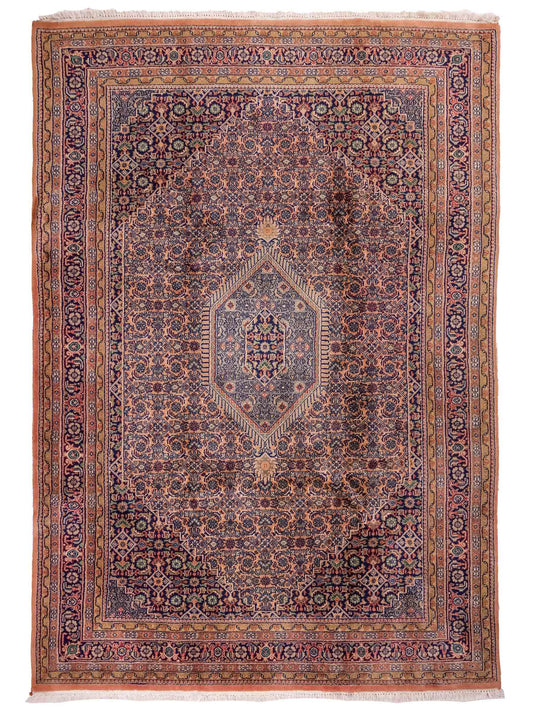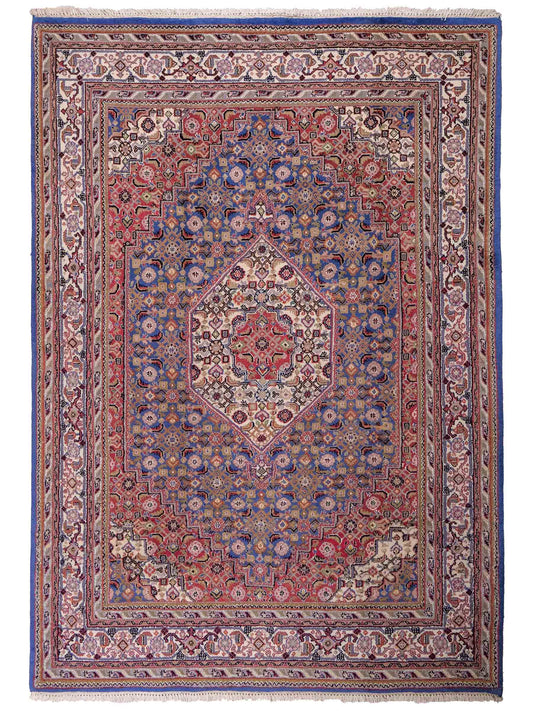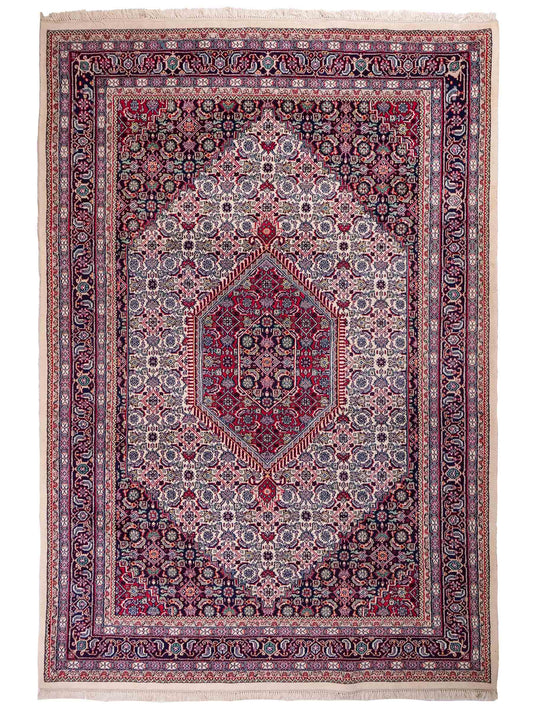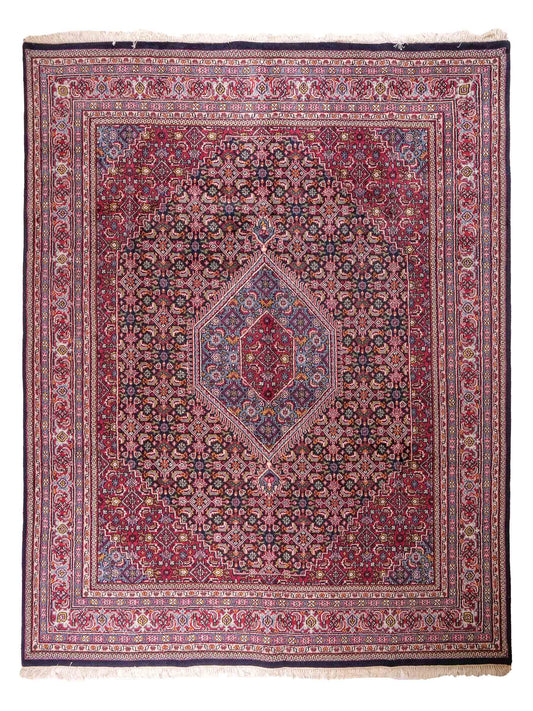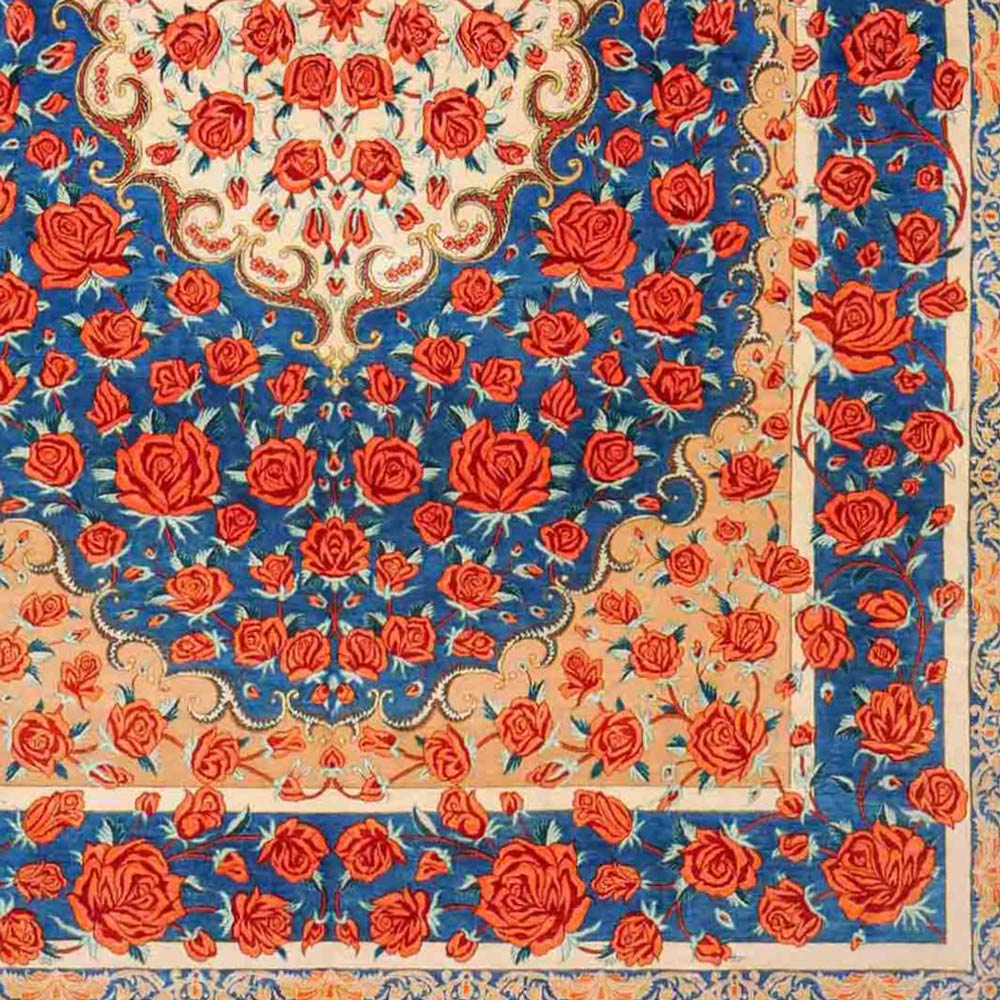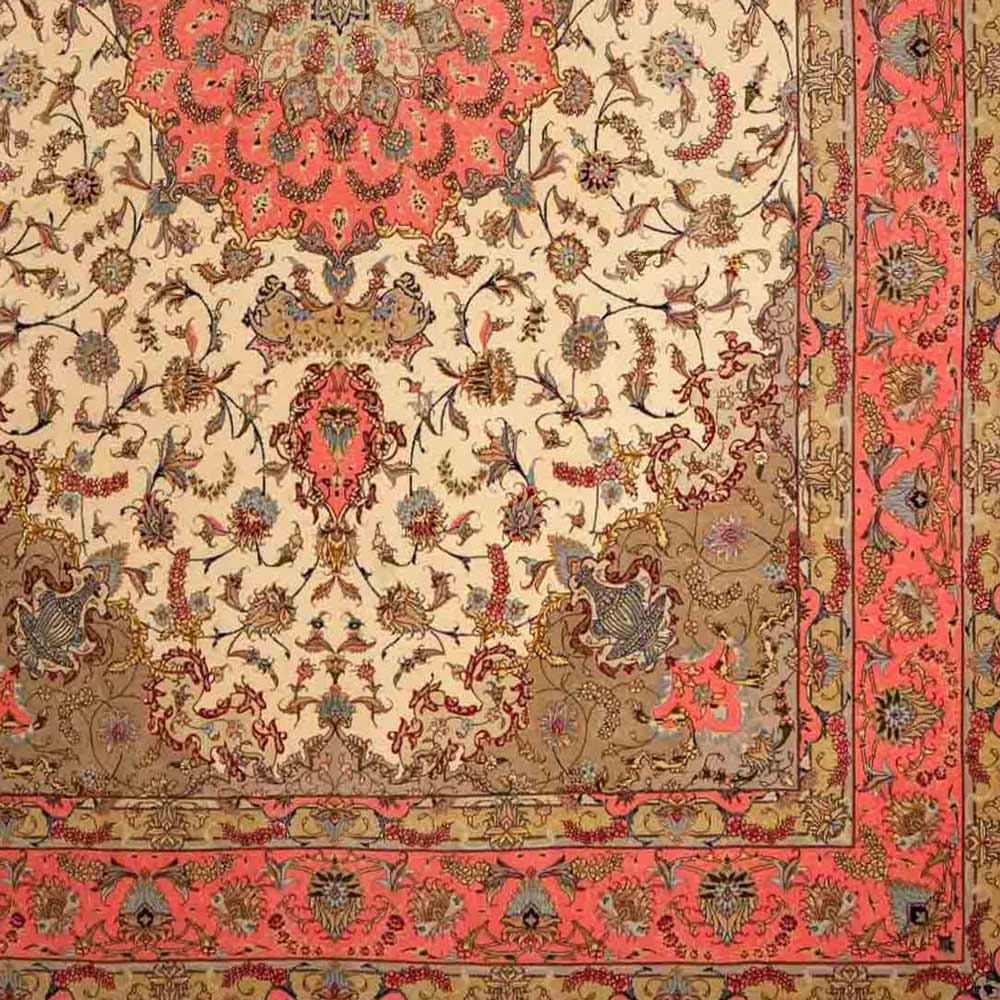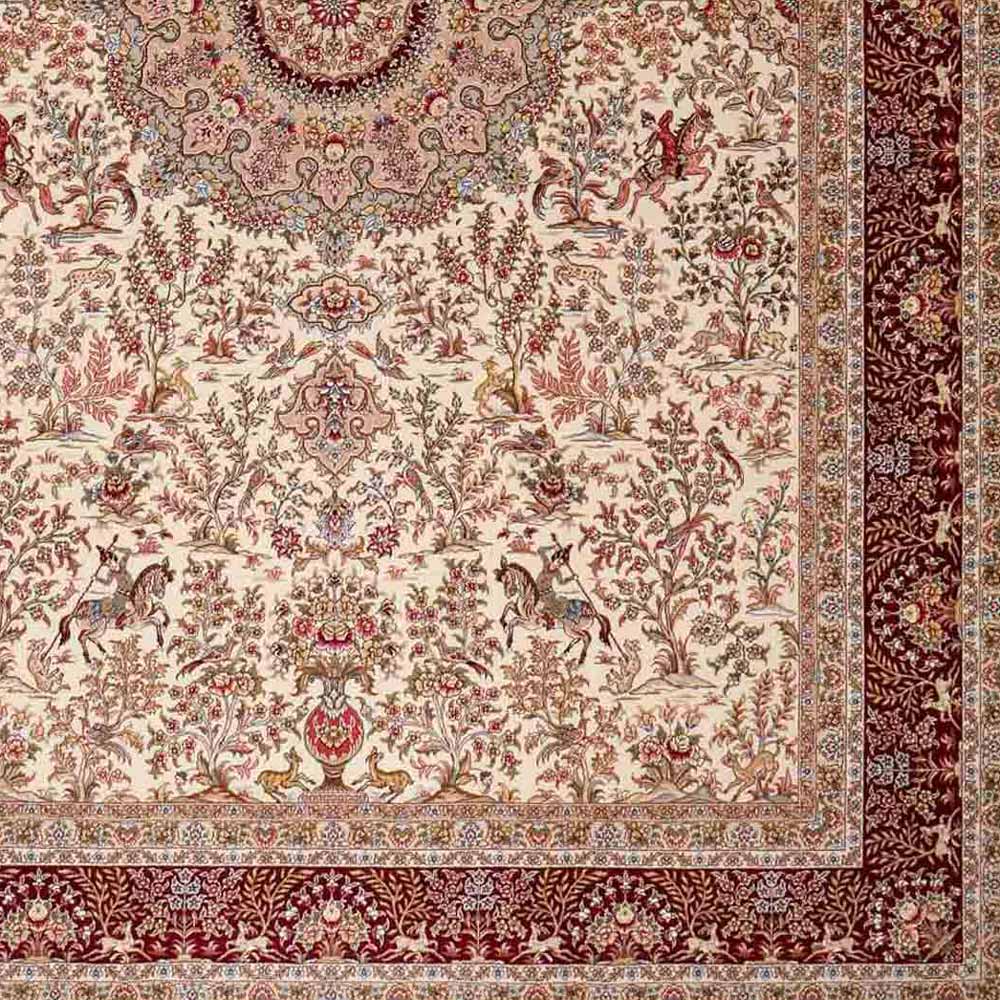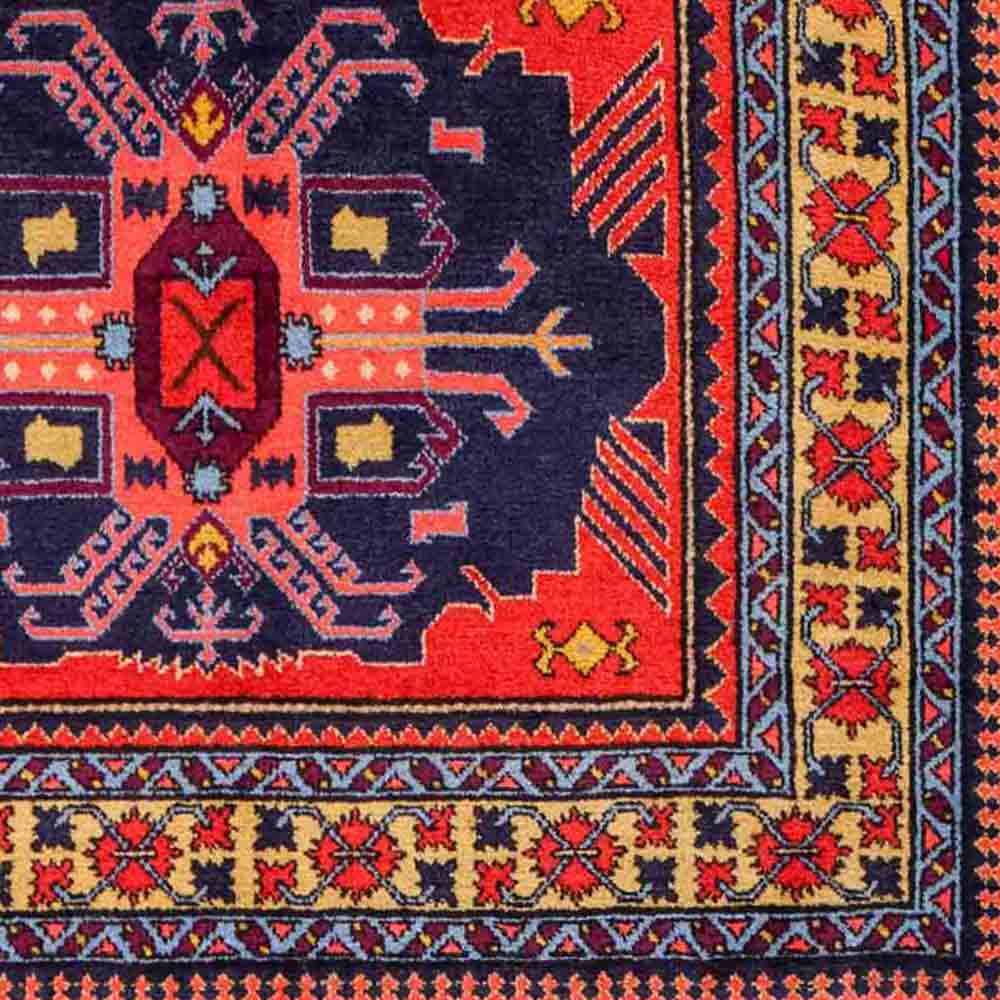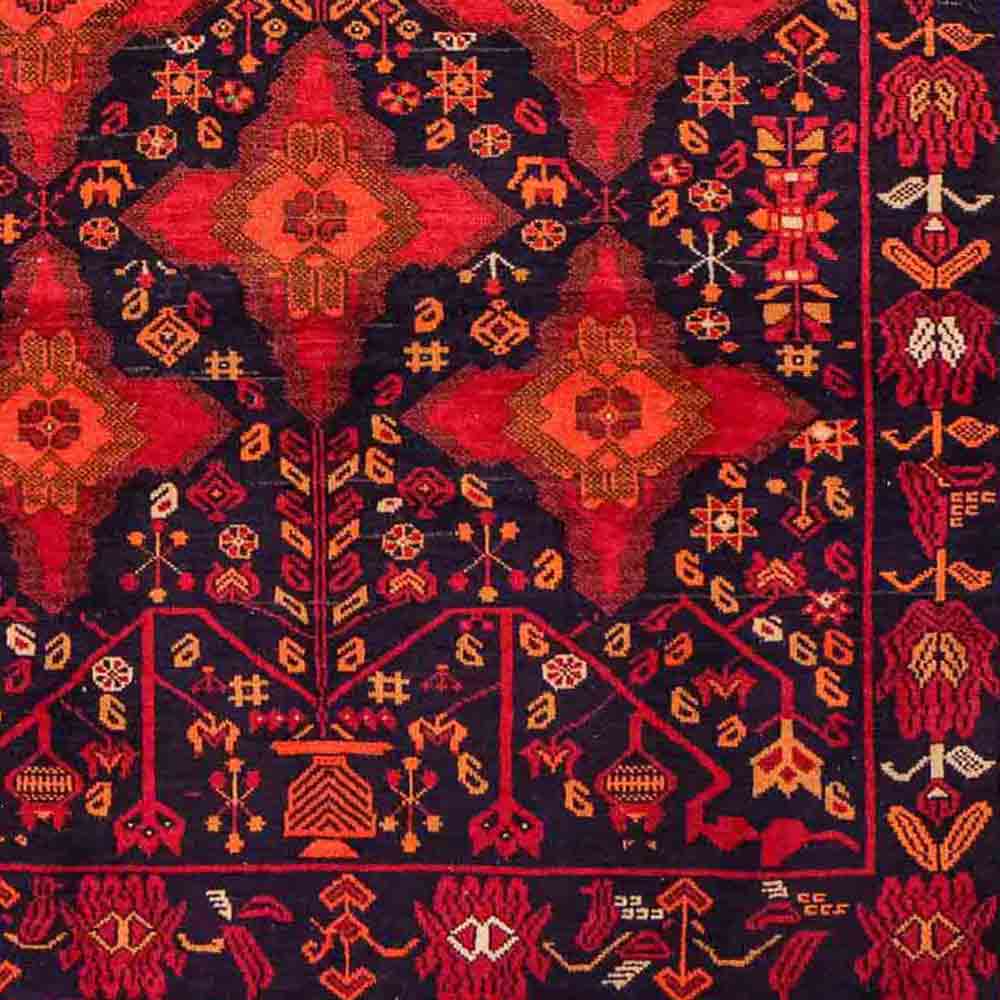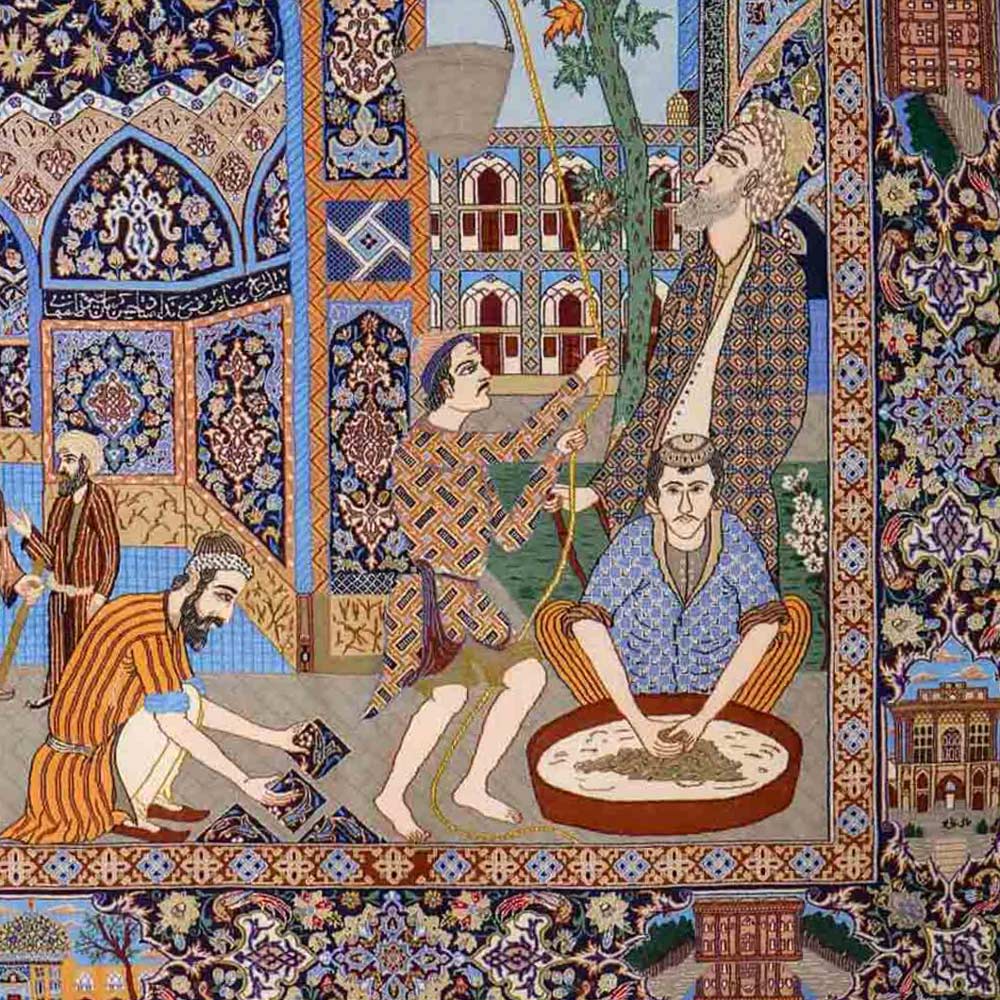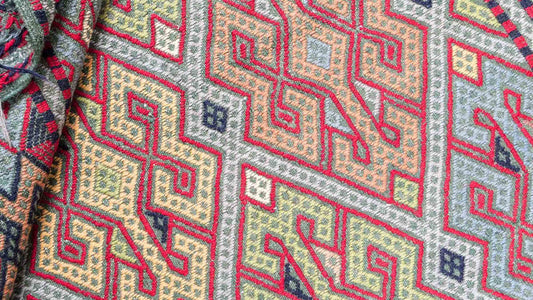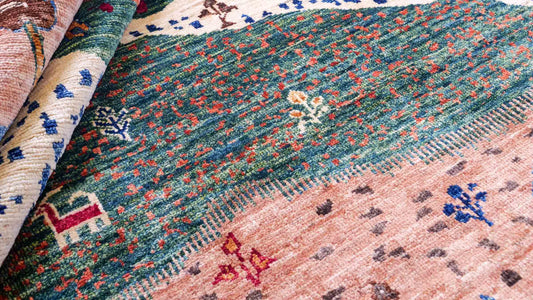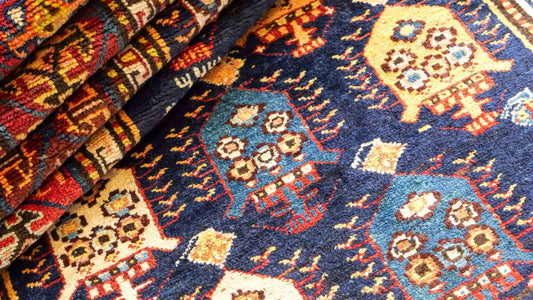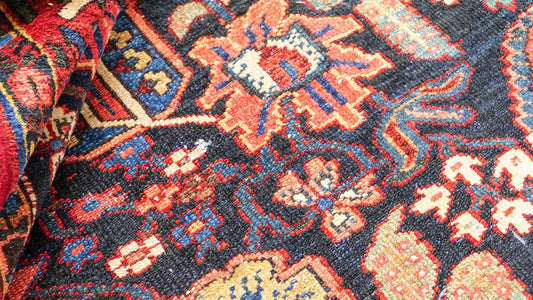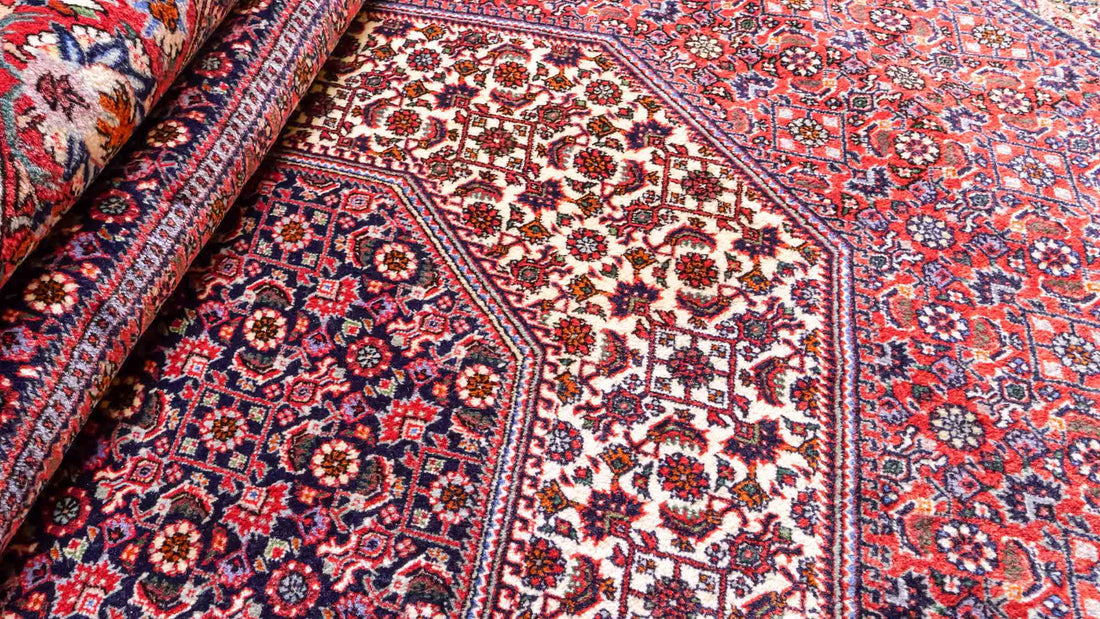
Bijar
Daniel KhademiWelcome to the fascinating world of Bijar rugs—legendary, hand-knotted masterpieces from Kurdish Iran, celebrated for their exceptional durability, rich color palette, and iconic symbolism. In this article, discover everything about their origin, history, craftsmanship, design, and why Bidjar rugs are highly sought-after investments.
Bijar Rugs: Key Facts at a Glance
- Origin: Bijar, Northwest Iran, Kurdistan Province
- Material: Finest quality sheep’s wool
- Knot Density: 250,000–600,000 knots/m² (especially dense and resilient)
- Design: Geometric patterns, medallions, florals, botanicals, typical Kurdish motifs
- Colors: Deep reds, navy blue, ochre, green, earth tones, exclusively natural dyes
- Special features: Extremely robust, ultra-long lifespan, artisan pieces with cult status
- Placement: Perfect for both classic & modern interiors—even high-traffic areas
Explore our curated collection of exclusive Bijar Rugs & Designs —find your one-of-a-kind masterpiece today!
Origin & Geographical Roots
The Heart of Kurdish Rug Tradition
Bijar is a city in the Kurdistan Province of northwest Iran, situated at the foot of the Zagros Mountains—about 80 km northwest of Hamadan and 150 km northeast of Tabriz. The mountain landscape shapes both the climate and the lifestyle of local people.
Weaving has deep roots in Bijar and is closely tied to Kurdish culture and craftsmanship. Bijar rugs are famous for their outstanding quality and resilience. They feature thick, hard-wearing construction and natural dyes. Geometric motifs and florals are common, reflecting Kurdish artistic traditions.
Rug weaving also plays a central social role in Kurdish communities, often involving women and children, strengthening family bonds and fostering cultural identity through the passing down of stories and skills.
The availability of fine sheep's wool, ideal climate, and centuries of tradition have made Bijar one of Iran’s leading rug-making centers. The strong link between region and artistry has given Bijar a special place in Persian carpet history, and collectors worldwide treasure these rugs for their unique aesthetics and exceptional quality.
The History of Bijar Rugs
From Nomadic Heritage to International Icon
The history of Bijar rugs is deeply intertwined with the cultural and ethnic identity of the region’s Kurdish population. Over centuries, Bijar has established itself as a major center of rug weaving, renowned for durable, high-quality carpets.
The roots date back to the Safavid dynasty (1501–1722), when rug making flourished throughout Iran. Local weavers in Bijar developed unique designs and techniques, different from those of Isfahan or Tabriz; over time, these styles have influenced Persian carpet art nationally.
In the 19th and early 20th centuries, Bijar rug production boomed as demand rose both domestically and internationally. Many rugs were exported to Europe, helping to make Bijars coveted collector’s items.
Despite challenges from modernization and machine-made rugs, the tradition endures in Kurdish culture. Many families still practice and pass down ancestral weaving skills.
Today, Bijar rugs are highly valued not only for their craftsmanship and beauty, but as a vital part of Kurdish cultural heritage. The dedication of the weavers shines through in every piece, often used at celebrations as symbols of prosperity and hospitality.
Interest from the global market fuels innovation and helps ensure that Bijar weaving adapts to evolving tastes.
Manufacturing Process of Bijar Rugs
Step by Step: The Making of a Masterpiece
The creation of a Bijar rug is an intricate craft that requires both technical mastery and a deep understanding of materials. The main steps are:
- Material Selection: Only use the best, lanolin-rich (fatty) regional sheep wool—for durability and a subtle sheen.
- Dyeing: Traditional boiling with natural dyes from plants, roots, and minerals—for brilliant, lasting colors.
- Preparing & Stretching: Cotton or wool warps are set on a wood frame; careful foundation setup is essential.
- Knotting Technique: Almost exclusively Turkish (Ghiordes) knots for an exceptionally dense, tight structure—hence the “Iron Rug of Persia.”
- Design & Patterns: Either worked from a template or improvised by the artisan; motifs range from diamonds and medallions to stylized nature and life symbols.
- Finishing: Removed from the loom, washed, trimmed, and individually quality controlled.
- Care: Air-dried in the shade, regular gentle vacuuming, protection from sun and moisture recommended.
Designs, Motifs & Colors of Bijar Rugs
Classic Motifs
Geometric Patterns: Bijar rugs frequently showcase crisp geometric shapes—rows of diamonds, lozenges, or other polygons, artfully arranged to communicate stability and structure.
Medallion Designs: A central medallion often dominates the layout, surrounded by intricate knots or floral motifs for a dramatic, harmonious effect.
Floral Motifs: In addition to geometry, stylized florals inspired by nature abound, ranging from large blossoms to detailed botanicals; often, multiple levels of complexity are layered for depth.
Mix of Styles: Bijars are known for blending classic elements with modern touches—making them appealing to both traditional and contemporary tastes.
Traditional Colors
Red Tones: Deep reds and vibrant tones like burgundy and carmine dominate, symbolizing warmth and vitality—frequently seen in central motifs and medallions.
Blue Tones: From sky-blue to midnight, blue is widely used and represents calm and stability, often balancing out the bolder reds.
Earth Tones: Browns, beige, ochre, and cream serve as neutral anchors in the design, bringing a grounding, natural feel.
Variety of Shades: In addition to the main hues, weavers blend countless nuances to create depth and dimension, making every Bijar rug unique and visually striking.
Design Classics Compared: Bijar, Sarouk, Kashan & Mashhad Rugs
| Feature | Bijar | Sarouk | Kashan | Mashhad |
| Origin | Northwest Iran, Kurdistan | Northwest Iran, Markazi | Central Iran, Isfahan |
Northeast Iran, Khorasan |
| Material | High-quality sheep wool | High-quality sheep wool | High-quality sheep wool, rarely silk | High-quality sheep wool |
| Knot density | 250,000 – 600,000 knots/m² | 160,000 – 400,000 knots/m² | 120,000 – 600,000 knots/m² | 200,000 – 500,000 knots/m² |
| Design | Geometric, floral, medallion | Geometric, floral, medallion | Geometric, floral, medallion | Geometric, floral, medallion |
| Colors | Reds, blues, earth tones | Reds, blues, earth tones | Reds, blues, earth tones, greens | Reds, blues, earth tones, greens, golds |
| Special features | Very hard-wearing, dense knots, strong colors | Vibrant colors, geometric & floral motifs | Natural dyes, classic, durable | High-quality wool, diverse designs |
| Value/Price range | Premium segment, highly value-stable | Premium segment, highly value-stable | Premium segment, highly value-stable | Mid to premium segment |
Checklist: How to Spot an Authentic Bijar Rug
- High-quality sheep’s wool? ✔
- Natural dyes (no synthetic/chemical smell)? ✔
- Very high knot density (min. 250,000 knots/m²)? ✔
- Turkish (firmly bound) knots? ✔
- Pattern clearly visible on the reverse? ✔
- Heavy, sturdy pile—the rug “stands up” when folded? ✔
- Neat edges and fringes, no fraying? ✔
- Certificate or proof of origin included? ✔
Styling Tips: Showcasing Your Bijar Rug
Here’s how to make your Bijar rug a focal point in your space:
- As a focal point: Place your Bijar at the center of your living room as a visual anchor. In classic settings, a large Bijar in rich reds and blues can frame a sofa and chairs for a welcoming, cozy look.
- Boho-chic: Blend your Bijar with bohemian style—combine with quirky art, colorful cushions, and natural textures. The lively patterns and vivid colors perfectly complement eclectic interiors.
- Modern elegance: In minimalist rooms with clean lines and neutral furniture, a Bijar in subtle tones creates warm contrast and a fresh, inviting accent.
- Rustic vibe: Pair Bijars with wood, natural materials, and vintage décor for a warm, organic feel in rustic or country homes.
- Traditional influence: In oriental or classic rooms, use as a wall hanging, under a dining table, or by the fireplace—combine with antique furniture for traditional flair.
Care & Longevity: Preserving Your Bijar Rug
How to Keep Your Bijar Rug Beautiful for Years:
- Vacuum regularly, but do not beat
- Treat stains immediately with lukewarm water & a cloth
- Avoid direct sunlight
- Professional cleaning recommended every 1–2 years
- Find more care tips in our blog post: *How to Care for Hand-Knotted Rugs*
Bijar Rugs: Collector’s Items & Investment Potential
By purchasing a Bijar rug, you are investing not only in a beautiful work of art but also in valuable craftsmanship of deeper worth and historical significance.
- Appreciation: Especially high-quality Bijar have the potential to increase in value over time. This stems from various factors, including knotting technique, material selection, and design rarity. Like many works of art, well-preserved antique Sarouks become sought-after collectibles, commanding significant appreciation on the market and making them attractive as investment assets.
- Collector’s Items: Bijars are excellent for collectors due to their variety of styles, designs, and sizes. A carefully chosen Bijar rug not only tells a story but also becomes a treasured heirloom to be passed down through generations.
The market for handmade rugs is steadily growing, as more people recognize the uniqueness and emotional value of craftsmanship. Bijar rugs unite art, history, and functionality in a unique way. They are not just an asset for any home, but also a valuable item that tells stories and can endure for generations. In a world increasingly dominated by mass production, individually crafted works of art are becoming ever more significant and valuable.
► For detailed tips & in-depth guidance, see our blog post: *Are Hand-Knotted Rugs a Good Investment?*
Request a personal style & purchase consultation for Bijar rugs now!
FAQ – Frequently Asked Questions about Bijar Rugs
What makes a genuine Bijar rug?
➤ Extremely high knot density, firm structure, finest wool, natural dyes, traditional Kurdish craftsmanship.
Are Bijars suitable for everyday and family use?
➤ Yes, they’re considered the most robust of all Persian rugs!
How do I care for a Bijar rug?
➤ Vacuum carefully, do not use aggressive – especially not chemical – agents, and avoid direct sunlight. Regular professional cleaning will maintain their beauty and value. More in our blog post: *How to Care for Hand-Knotted Rugs*
How can I recognize an authentic Bijar?
➤ Heavy, “iron” feel, vibrant colors, clear design visible on reverse, certificate of authenticity and origin. At JUPITER Intl, every hand-knotted, hand-tufted, and handwoven rug comes with a Certificate of Authenticity.
What should I look for when buying a Bijar?
➤ Condition, age, quality, authenticity, and ideally a certificate from an expert/dealer.
Are Bijar rugs a good investment?
➤ Very fine and/or antique Bijar rugs with distinctive patterns are stable-value collector and connoisseur pieces. Read more in our blog post: *Are Hand-Knotted Rugs a Good Investment?*
Conclusion: A Piece of Kurdish Heritage
When you choose a Bijar rug, you’re acquiring a genuine piece of Persian and Kurdish history—a true handcrafted treasure that will last for generations. Find your one-of-a-kind at JUPITER Intl!
Explore our curated collection of exclusive Bijar Rugs & Designs —find your one-of-a-kind masterpiece today!
Related blogs & blog posts you might also be interested in:
→ Design Classics, Countries of Origin, Carpet Materials, Carpet Guide

